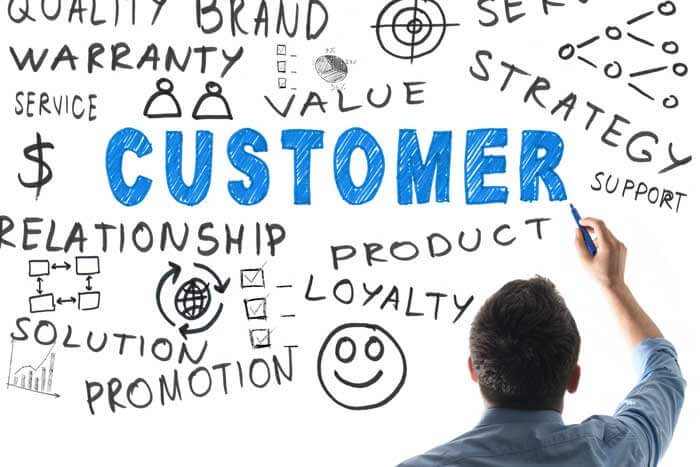When was the last time you heard someone rave about an experience they had with their Internet, television, or mobile phone service providers? Going by numerous sentiment-measuring reports, the likelihood is that such an occurrence is very rare.
Let’s change the question around: When was the last time you heard someone complain about their experience when dealing with a telecommunications company? The likelihood is that we don’t have to think long and hard to remember about a poor experience that we’ve heard or read about.
Despite the telecom industry’s cutthroat market environment in which brands steal competitors’ customers by buying out existing contracts and constantly undercut rate plans to get customers to switch, few have made customer centricity a priority. This shortcoming is evidenced by the industry’s low Net Promoter scores in Satmetrix’s recently released 2014 Net Promoter Industry Benchmarks. With a score of 39, Tracfone had the highest NPS among cellular phone service companies, while DirectTV’s NPS of 34 ranked it highest among cable and satellite television providers. Bright House Networks’ NPS stood at 20, even though it was the top-ranked company among Internet service providers. To put these scores into perspective, USAA gained NPS scores in the 80s for banking, automotive insurance, and home and contents insurance.
Further, television and Internet service providers were among the companies receiving an average of “poor” ratings in the 2014 Temkin Experience Ratings.
So why are customer experience metrics for telecom companies continually low? And more importantly, why does it seem like there have been no customer strategy advancements despite the constant threat to their customer loyalty? Perhaps it’s because they’re all in the same boat. “The best-in-class companies are not faring much better than those that are ranked at the worst positions,” Chris Burton, senior vice president for communications, media, and technology at TeleTech, notes.
Traditionally, telecom providers have looked at cost and coverage as two of the main areas of investment. In fact, even marketing messages seem to target these two factors as main differentiators. Verizon, for example, uses maps of the United States to compare its 4G LTE coverage with coverage areas of other providers.
But in an intensely competitive market, where companies are constantly trying to one-up their competitors, lack of investment in customer-centric measures is seeing clients considering other companies, with some actually pulling the trigger and making the move. While cost and coverage are important factors for customers, on their own, they are not enough to avoid churn. “It’s no longer enough to just be the cheapest offer,” notes Martin Morgan, Openet’s director of marketing. As Don MacNeil, CMO for Xo Communications, explains, in today’s uber transparent market, customers can easily find out more about the companies they’re doing business with and also about their competitors.
Further, even though many customers are tied down by contracts, a negative customer experience could very well drive them to a competitor once their contract is up, if not before. T-Mobile, for example, is even offering to pay the much-dreaded early termination fees of customers who want to switch carriers for their postpaid plans. If other companies follow suit, customers will have the option to break their contract anytime their current provider fails to deliver on their expectations, or they come across a better offer. Experts share five actions that telecom companies should take to attract new customers and retain existing ones:
1. Move towards a customer-based focus: Organizations across all industries suffer from departmental silos. Especially when customers buy more than one service from a company, it’s imperative that the organization makes the necessary investments to create a 360-degree profile of its customers. As Burton explains, some telecom companies are trying to consolidate their CRM systems to have a more holistic view of their customers and enable the delivery of better customer service. Further, improved customer visibility will allow telecom providers to reiterate what other industries have been doing for some time-offer services and products that best fit an individual or a household’s needs. “They need to steer away from the one-size-fits-all approach and instead offer products and services that address the needs of different segments,” notes Michelle Nowak, vice president of product management at CSG International.
2. Invest in first-contact resolution: Customers want their problems addressed and rectified immediately. However, as Burton notes, many telecom providers rate poorly when it comes to first-contact resolution, reflecting negatively on their customer satisfaction scores. There are a number of steps that companies can take to resolve issues immediately, including investing in training for contact center agents and providing agents with access to the information they need to give customers the answers they need. Ryan Pellet, senior vice president for strategic consulting services at Nexidia, also recommends using insights from contact center calls to determine what is making customers unhappy and making them want to churn. Information from individual calls, he notes, needs to be put in context of the relationship between a client and the company to better understand whether this is the first time that particular customer had a problem or whether this is a recurring complaint.
3. Focus on an omnichannel experience: With customers communicating with brands over multiple channels, organizations need to make sure that they can connect these different touchpoints and provide continuous experience across the board. While brands are trying to provide new ways for their customers to get in touch with them, the different channels are often siloed. Burton uses the example of a customer who starts an inquiry with a company by engaging with chat support when he realizes that the issue is complicated and he would rather get on the phone with an agent. “But many times there is no direct way to connect to the agent, and when the customer finally navigates the provider’s IVR maze, he’s often connected with someone new who doesn’t have visibility into the chat conversation.” In order to improve the experience, telecom companies need to consider investing in technologies like unified communications platforms and the cloud, as well as unifying the organization internally to connect the disparate channels and provide seamless transitions for customers.
4. Provide proactive warnings and information: In today’s connected world, customers expect to be able to communicate anytime and anywhere. Loss of a wireless connection or Internet access is, for many people, an experience they will go to extremes to avoid. Nowak says one service that telecom companies should invest in is warnings and alerts when customers are about to reach their data limits. This, she notes, is especially important for those on shared plans who might not know how much data others in the group have used. “Use real-time data to notify customers about what they’re buying and what they’re consuming,” Nowak recommends. Ulla Koivukoski, senior vice president for Comptel’s analytics business unit, agrees. “We need to proactively reach out to a customer before he calls us,” she notes.
Organizations should go a step further and use such opportunities to inform customers of other plans that might fit their needs better. “Understand their needs, quantify them, and offer them the right services.” Koivukoski uses the example of Bangladesh-based pre-paid mobile provider Robi Axiata, which is leveraging data to determine what services customers need and then letting them know about the packages that make the most sense to them. Further, Morgan highlights that these offers need to be timely. “If a customer is using his mobile phone to watch a video and encounter a problem with data, send him a message with an offer to make up for that issue,” he recommends. “Apart from being relevant, an offer needs to be timely or it will stop being relevant.”
5. Identify high-value customers: While all customers are important, there are certain segments that are more valuable than others. Telecom companies need to first determine the attributes of their high-value customers and then identify these clients. The next step, Burton notes, is to determine who, among this group, is most likely to churn, for example those clients who are approaching the end of their contract. Not only can organizations make sure these segments are routed to higher tier agents who can provide a better experience, but they should put structures into place to proactively reach out to these customers with relevant offers and information. For example, a cable company which knows that a particular household enjoys watching movies might offer that account a month of free movie channels or credit to use towards the purchase of on-demand movies.
Acquiring new customers is neither easy nor cheap. This is why organizations need to make sure those new customers are satisfied enough to want to continue doing business with the brand. Otherwise, companies are in for an endless cycle of acquisition without retention, a practice that will drain their coffers.










